Explain the mistake
Where to find, and how to use, one of the best maths activities
This newsletter is made possible because of Eedi. Check out our brand-new set of diagnostic quizzes, videos, and practice questions for every single maths topic, ready to use in the classroom, and all for free, here.
Challenging students to analyse and explain work that contains an error is a useful activity for the following reasons:
Students have an opportunity to reason, moving maths beyond simply carrying our procedures
Students must communicate that reasoning, either verbally or in writing
There’s a nice bit of differentiation built-in: some students, may be able to identify the mistake, other students may also be able to explain the mistake, and others may also be able to offer help to a student who has made that mistake. We do not need to predict in advance who those students might be - everyone can be given the same activity
Regular discussion of mistakes in class promotes the message that mistakes are a normal and necessary part of learning, which should help students be more forthcoming with their own mistakes
When confronted with a plausible, but incorrect, way of thinking, students may encounter cognitive conflict which may help them resolve their own misunderstandings
Explain the mistake is a high-value activity structure that can be used with any topic and any class. As students (and teachers) become familiar with the structure of the activity, more attention can be dedicated to the content
How regularly do you challenge your students to explain the mistake?
Explain the mistake on Eedi
At Eedi, we have created an Explain the mistake activity for every single concept in mathematics, complete with a video produced by one of our teachers. You can find our Explain the mistake tasks alongside diagnostic questions, worked example videos, fluency and intelligent practice, and problem-solving tasks. And it is all 100% free. You can view our full topic collection here.
For each Explain the mistake activity, we challenge students to:
Identify where a student has gone wrong
Explain why they have gone wrong
Decide how you would help them
Here are some of my favourites:
When and how to use Explain the mistake effectively
A good time to confront students with mistakes to explain is after they have built up some confidence and experience with the correct way to do something. Exposing students to mistakes too early may lead to them getting confused between what is right and what is wrong. Therefore, using these activities at the end of some fluency practice, or as an Exit Ticket, or in a review exercise such as an end-of-topic test or a homework can work well. Explain the mistake can also be used effectively as a retrieval activity, perhaps part of a Do Now or a Low-Stakes Quiz a few weeks after the topic was last encountered.
Explain the mistake in action
Here are some examples of Explain the mistake in action from a school I am currently supporting. First, from a Year 9 lesson on probability:
Next from a Year 10 lesson on factorising.
I really loved in this lesson when the teacher borrowed a students’ board to put under the visualiser, and then challenged students to discuss in pairs how this answer compared to theirs:
Lovely stuff!
I want more!
Just a reminder. To access all our Explain the mistake resources, together with diagnostic questions, worked example videos, fluency and intelligent practice, and problem-solving tasks for every single mathematical topic, just visit here.
Are these resources useful?
How will you use them?
Let me know in the comments below!
🏃🏻♂️ Before you go, have you…🏃🏻♂️
… checked out our incredible, brand-new, free resources from Eedi?
… read my latest Tips for Teachers newsletter about how to make Call and Respond (even more) fun?
… listened to my most recent podcast about rehearsal, CPD and asking who got 8/10?
… considered booking some CPD, coaching, or maths departmental support?
… read my Tips for Teachers book?
Thanks so much for reading and have a great week!
Craig


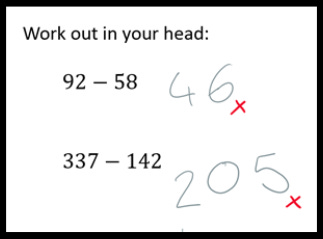
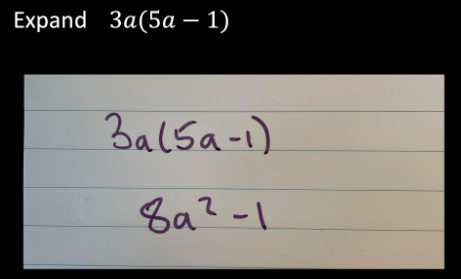
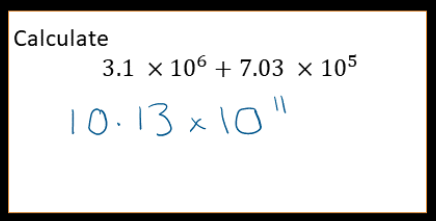
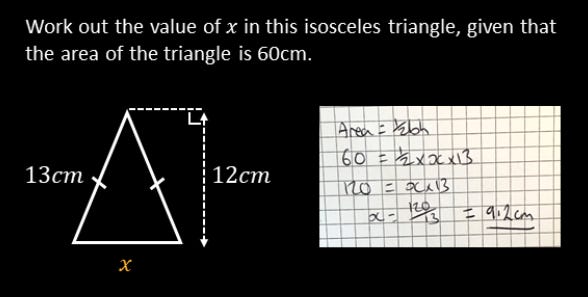






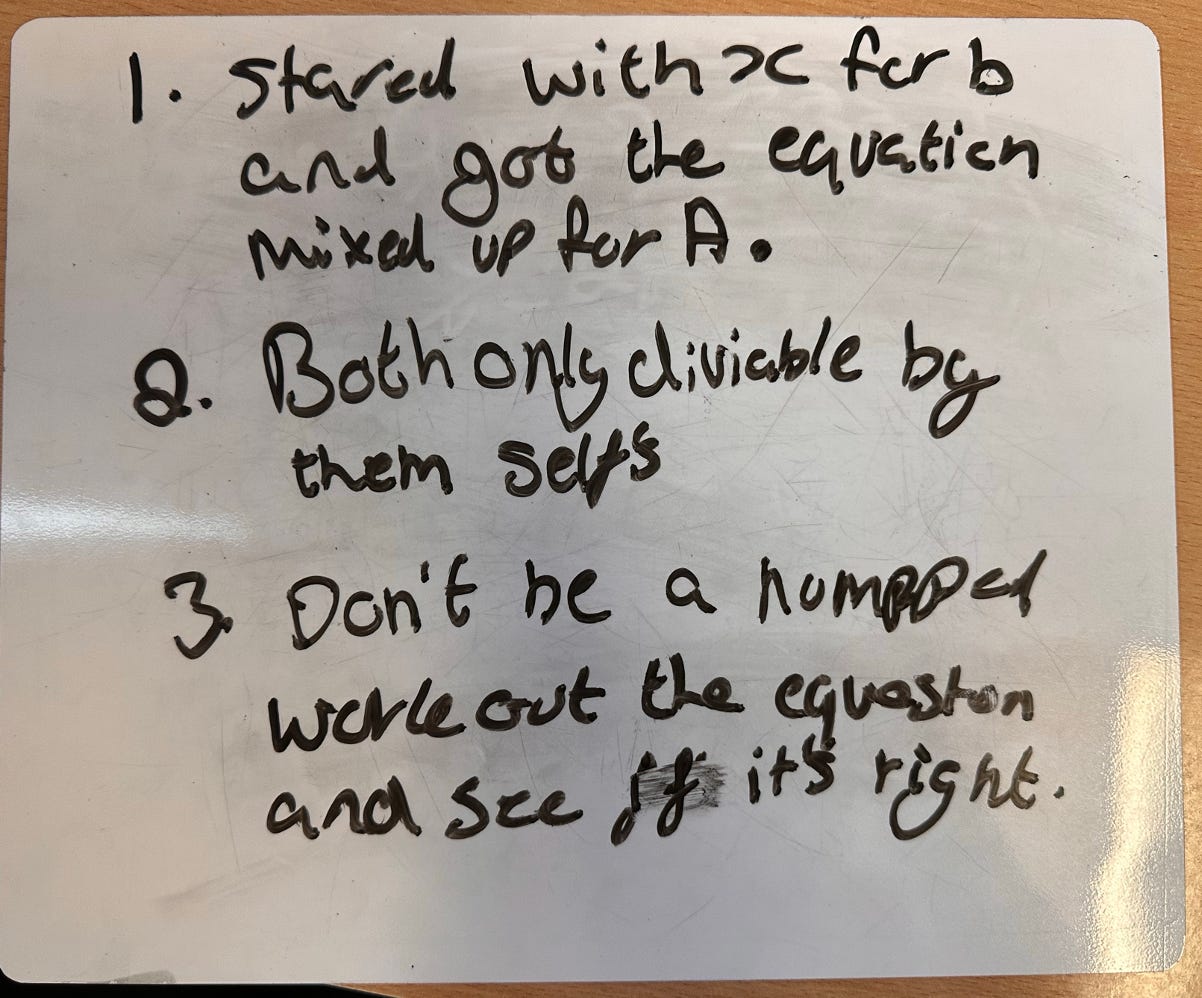
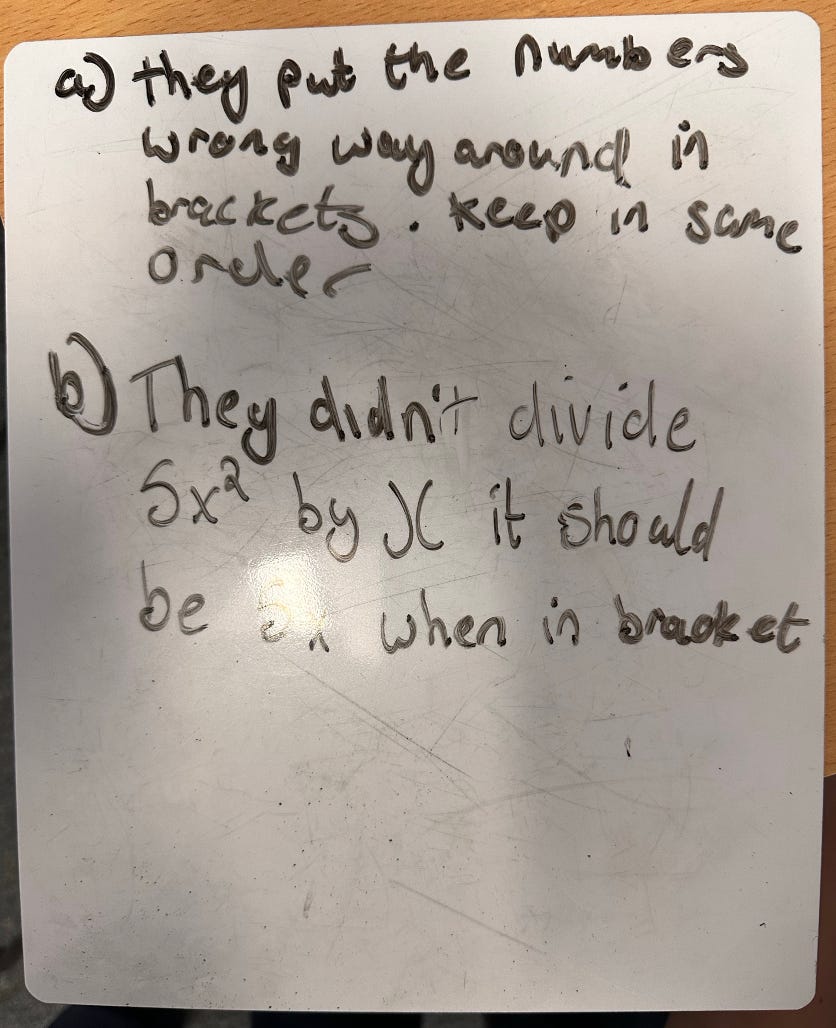

Could you link directly to the explain the mistake resources?